Introduction
How To Set Up A Rabbit Cage: Creating a comfortable and secure living space for your pet rabbit is essential to ensure their well-being and happiness. Setting up a rabbit cage requires careful consideration of their needs, behaviors, and safety. Whether you’re a new rabbit owner or looking to upgrade your rabbit’s habitat, this guide will provide you with step-by-step instructions and tips on how to set up a rabbit cage that promotes their health and contentment. From selecting the right cage to arranging enriching elements, every aspect contributes to a cozy and thriving environment for your furry companion.
A spacious cage is crucial for your rabbit’s well-being. A general guideline is that the cage should be at least four times the size of your rabbit when they’re fully stretched out. They should be able to hop around, stretch, and stand on their hind legs without restrictions.Opt for a cage with a solid bottom to provide a comfortable surface for your rabbit’s feet. Wire-bottom cages can cause discomfort and potential injuries.Look for cages with large doors that allow easy access for cleaning, feeding, and interacting with your rabbit.
Proper air flow is essential to maintain a healthy environment. Choose a cage with sufficient ventilation to prevent humidity buildup.Line the cage with a soft, rabbit-safe bedding material. Avoid cedar or pine shavings, as their strong aroma can be harmful to rabbits. Opt for paper-based or straw bedding instead.Rabbits appreciate a quiet and secure hiding spot. Place a cozy shelter or hideout in one corner of the cage where your rabbit can retreat when they need privacy.Use sturdy, chew-resistant bowls or water bottles to provide fresh water at all times.
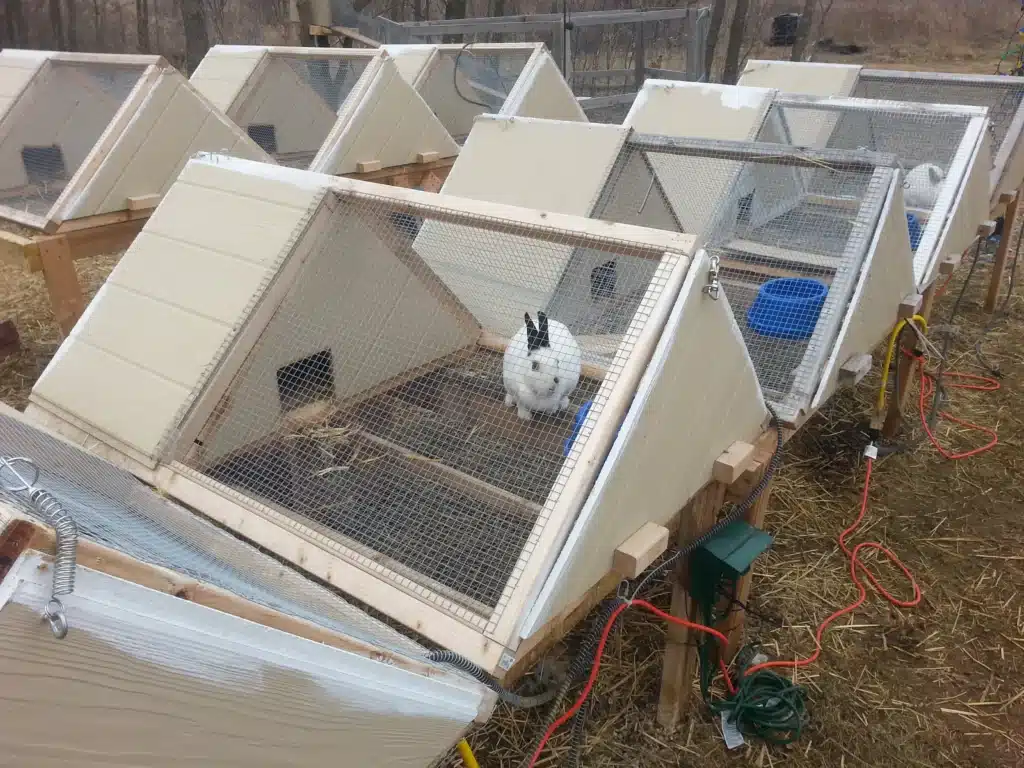
How do you set up a good rabbit cage?
Their home base needs to be large enough to accommodate your rabbit’s needs. A rabbit enclosure should be at least 3 times the length of the rabbit and approximately two times the width. If it has a ceiling, it should be tall enough that the rabbit can stand up all the way on their hind legs without bumping their head.
Choose the Right Cage
Selecting the appropriate cage is the first step in creating a good living environment for your rabbit. Consider the following factors:
Size: Opt for a spacious cage that allows your rabbit to move around freely. A larger cage contributes to their overall health and happiness.
Material: Choose a cage with a solid, flat bottom to prevent injuries to your rabbit’s feet. Wire-bottom cages can cause discomfort and are best avoided.
Accessibility: Ensure the cage has large doors that allow easy access for cleaning, feeding, and interaction with your rabbit.
Create a Comfortable Base
Line the bottom of the cage with a soft and safe bedding material. Avoid cedar or pine shavings, as they can be harmful to rabbits due to their strong aroma. Opt for rabbit-safe bedding options like paper-based or straw bedding.
Offer Essential Furnishings
A well-equipped rabbit cage provides various elements that contribute to your rabbit’s comfort and stimulation:
Hideout or Shelter: Rabbits appreciate a private space to rest and feel secure. Place a cozy shelter or hideout in one corner of the cage to offer a safe haven.
Food and Water Stations: Use sturdy bowls or water bottles to provide fresh water and food. Include a hay rack or holder to keep hay clean and accessible.
Litter Box: Rabbits can be litter trained. Place a litter box with rabbit-safe litter in one corner to encourage proper waste elimination.
Stimulate with Toys and Enrichment
Rabbits are curious creatures that need mental and physical stimulation:
Toys: Offer a variety of toys like cardboard boxes, tunnels, and wooden chew toys. These items engage your rabbit’s senses and prevent boredom.
Platforms and Ramps: Introduce platforms or ramps to create different levels within the cage. This encourages exercise and exploration.
What do you put at the bottom of a rabbit cage?
Cardboard, hay, and paper make excellent flooring for a cage or hutch. You probably already have some in your home right now. Wood bedding, marmoleum, and fleece work well, too.
Rabbit-Safe Bedding Options
When selecting bedding for your rabbit’s cage, prioritize options that are safe and comfortable for them:
Paper-Based Bedding: Paper bedding made from recycled paper is absorbent and soft, providing a comfortable surface for your rabbit. It’s dust-free and safe for them to burrow in.
Straw Bedding: Straw is a natural bedding option that can provide warmth and comfort. However, be cautious about using straw with sharp ends, as it can cause injuries. Choose straw that is clean and free from pesticides.
Hay: Hay not only serves as a nutritious food source but also doubles as bedding. Rabbits enjoy nibbling on hay and using it to create nests.
Bedding Dos and Don’ts
Consider these factors when choosing bedding for your rabbit’s cage:
Avoid Cedar and Pine: Cedar and pine shavings emit aromatic oils that can be harmful to rabbits’ respiratory systems. Avoid using these types of bedding.
Avoid Fragrances: Bedding with added fragrances or scents can irritate rabbits’ sensitive noses. Opt for unscented options.
Avoid Synthetic Fabrics: Avoid bedding made from synthetic materials, as they can cause discomfort and even injury to rabbits.
Aim for Absorbency: Bedding should be absorbent to help manage moisture and odor in the cage.
Change Regularly: Regardless of the type of bedding you choose, it’s important to change it regularly to maintain cleanliness and prevent health issues.
Proper Bedding Depth
The depth of bedding in the cage should allow your rabbit to burrow comfortably and engage in natural behaviors:
Litter Area: In the litter box area, provide a layer of bedding that allows your rabbit to dig and burrow. This encourages them to use the litter box consistently.
Resting Area: In the resting area, provide a thicker layer of bedding to create a comfortable surface for your rabbit to lie down.
What toys do rabbits like best?
Objects to play with or throw – such as untreated straw, wicker, sea-grass mats and baskets, balls and plastic flower pots. Solid plastic baby toys such as ‘key rings’, rattles, stacking cups and some robust cat and parrot toys can make good rabbit toys.
Chew Toys
Rabbits have a natural instinct to chew, which helps keep their teeth healthy and prevents overgrowth. Opt for safe and rabbit-friendly chew toys made from materials like:
Wooden Blocks: Untreated wooden blocks or sticks are great for rabbits to gnaw on.
Willow Balls: Willow balls are woven from natural materials and provide both a chewable and tossable toy.
Cardboard Tubes: Cardboard tubes from paper towels or toilet paper rolls are simple yet effective chew toys.
Tunnel Toys
Rabbits love to explore and hide, making tunnel toys a favorite choice:
Fabric Tunnels: Soft fabric tunnels give rabbits a cozy space to crawl through and hide in.
Cardboard Tunnels: Sturdy cardboard tunnels offer opportunities for exploration and play.
Puzzle and Foraging Toys
Stimulate your rabbit’s problem-solving skills with interactive toys:
Food Dispensing Toys: Toys that dispense treats or hay when manipulated can engage your rabbit’s mind.
Rabbit-Safe Puzzle Toys: These toys challenge rabbits to figure out how to access treats or food hidden inside.
Stuffed Toys
Soft, stuffed toys can be comforting for rabbits to snuggle with:
Stuffed Animals: Choose stuffed animals with minimal embellishments that your rabbit can safely enjoy.
What do rabbits sleep on?
Hay is dried grass and the most vital part of a rabbit’s diet. Straw is dried stalks from grain crops and is much more suitable for bedding as it is warmer and less likely to be eaten. It’s not a problem if rabbits eat straw but there are few nutrients and they must be given good quality hay to eat.
Hiding Spots
In the wild, rabbits are prey animals, and this instinct has influenced their sleeping habits. Rabbits often seek out hidden and secluded spots to sleep, where they feel protected from potential predators. These hiding spots can include burrows, crevices, and enclosed spaces.
Comfortable Surfaces
Rabbits prefer sleeping on soft and comfortable surfaces. While they may not have the same concept of a “bed” as humans do, they gravitate towards cozy materials that provide warmth and support. Some common surfaces where rabbits choose to sleep include:
Bedding: In a domestic setting, rabbits often sleep on the bedding provided in their enclosure. Soft and clean bedding materials, such as straw or paper-based bedding, offer a comfortable surface for them to rest on.
Hay: Rabbits enjoy nibbling on hay throughout the day, and it’s not uncommon to find them creating a cozy spot within a pile of hay to sleep on.
Soft Mats or Blankets: Placing soft mats or blankets within their enclosure can provide a comfortable resting area. Just ensure that the materials are safe and free from small parts they could chew on.
Sheltered Spaces
Rabbits prefer sleeping in sheltered spaces that offer protection from drafts and disturbances. This behavior is rooted in their survival instincts. Providing hideouts or enclosures within their living area can offer them a secure place to rest.
What type of bedding is best for rabbits?
Whether you use shredded paper bedding, paper pellets, or compressed paper, paper-based bedding can make an outstanding bedding for your pet rabbit. There are specially made commercial paper beddings. But almost any paper will do. Just avoid inks, dyes, glue, labels, tape, and so forth, as these can harm your bunny.
Paper-Based Bedding
Paper-based bedding is a popular and safe option for rabbits. It’s made from recycled paper and provides several benefits:
Absorbency: Paper-based bedding is absorbent, helping to control moisture and prevent odors in your rabbit’s enclosure.
Softness: The texture of paper bedding is gentle on your rabbit’s feet and provides a comfortable surface for them to rest on.
Dust-Free: Paper bedding is usually dust-free, making it a good choice for rabbits with respiratory sensitivities.
Aspen Shavings
Aspen shavings are another option that can be suitable for rabbits:
Low Aromatic Oils: Unlike cedar and pine, aspen shavings have lower levels of aromatic oils, making them safer for rabbits’ respiratory systems.
Absorbent: Aspen shavings have decent absorbent properties, which can help keep your rabbit’s living area dry.
Straw Bedding
Straw is a natural bedding material that can provide warmth and comfort for rabbits:
Coziness: Straw creates a warm and cozy environment, particularly during colder months.
Chewing Option: Rabbits can also chew on straw, which helps with dental health.
Hay as Bedding
Using hay as bedding not only provides a comfortable surface but also serves as a food source:
Dual Purpose: Hay bedding doubles as a nutritional source for your rabbit, encouraging them to nibble and forage.
Texture Variety: The mix of bedding and food encourages natural behaviors and provides textural variety.
Pellet Litter
For the litter box area, using rabbit-safe pellet litter can be effective:
Absorption: Pellet litter is designed to absorb moisture and control odors, making it a practical choice for litter boxes.
Is it OK to leave rabbit in cage?
However, if you only have one rabbit, you should let it outside of its hutch more often. If you leave them locked inside their hutch 24/7, most rabbits will become stressed out or depressed. The lack of exercise can also lead to obesity and other related health problems.
Cage as a Safe Haven
Rabbits naturally seek shelter and secure spaces, so a cage can serve as their refuge when they need a break or rest. A cage provides a controlled environment where they can feel safe and protected from potential hazards, such as other pets, electrical cords, or toxic plants.
Temporary Confinement
Leaving your rabbit in a cage for short periods can be acceptable, especially when:
You’re Not Home: If you’re away from home, your rabbit’s cage can keep them safe until you return.
Supervised Rest: After playtime or exercise, rabbits often need rest. Placing them in their cage ensures they rest without disturbances.
Health or Medical Reasons: In cases of illness, injury, or post-surgery recovery, a cage can aid in monitoring and healing.
Enrichment and Interaction
While in the cage, ensure your rabbit has plenty of enrichment to keep them mentally stimulated:
Toys: Provide toys, chew items, tunnels, and platforms to prevent boredom.
Hay and Water: Keep fresh hay and water available at all times to mimic a natural grazing environment.
Social Interaction: Spend time interacting with your rabbit when they’re in the cage. Gently talk to them, offer treats, and pet them to maintain social bonds.
Is it OK to put rabbit in cage at night?
However, even if it is not necessary, it may be beneficial for your rabbit to cover the cage at night. Some rabbits are so sensitive that they have a hard time being quiet in the dark. Additional protection in the form of a towel or blanket over the cage can help.
Safety and Security:
Using a cage at night can offer a sense of security for your rabbit. It provides a controlled environment where they can rest without exposure to potential dangers, such as other pets or hazards around the house.
Natural Nocturnal Behavior
Rabbits are crepuscular, which means they are most active during dawn and dusk. They have evolved to be alert and active during these times to avoid predators. While they may be less active during the night, they’re not entirely nocturnal animals. Providing them a safe, comfortable space to rest during the night aligns with their natural rhythms.
Balancing Freedom and Confinement
It’s important to strike a balance between confinement and freedom. While using a cage at night can offer security, rabbits still need ample space and exercise during their active periods. Make sure they have plenty of time outside the cage to move, hop, and explore.
Cage Size and Comfort
If you choose to use a cage at night, ensure it is appropriately sized. A cage should be large enough for your rabbit to stretch out, stand on their hind legs, and move around comfortably. Provide soft bedding, a hiding spot, and familiar items to make the cage a comfortable sleeping area.
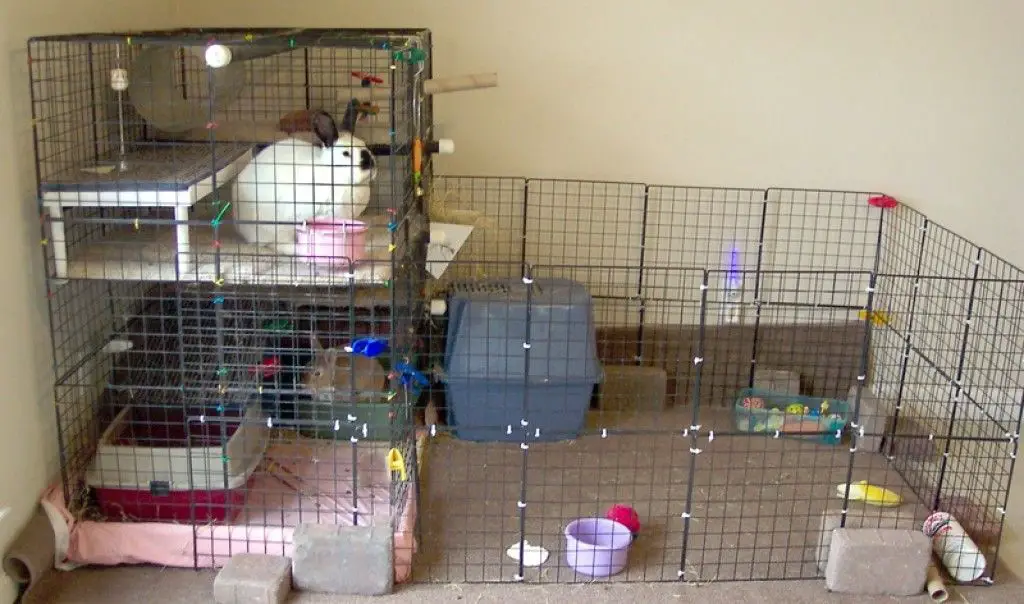
Conclusion
Creating an ideal living space for your beloved rabbit involves more than just assembling a cage. It’s about understanding their natural behaviors, needs, and preferences and translating that knowledge into a comfortable and enriching environment. By carefully selecting the right cage, setting up various essential elements, and maintaining a routine of cleanliness and care, you’re providing your rabbit with a home that fosters their well-being and happiness.
Remember that a properly set up rabbit cage goes beyond mere physical requirements – it’s a reflection of your commitment to your furry friend’s quality of life. The hiding spots, toys, platforms, and comfortable bedding all contribute to a space where your rabbit can feel safe, secure, and stimulated. As you observe your rabbit exploring, playing, and resting contentedly in their well-designed habitat, you’ll find that the effort you’ve put into setting up their cage is rewarded with the joy and companionship of a happy and healthy rabbit.

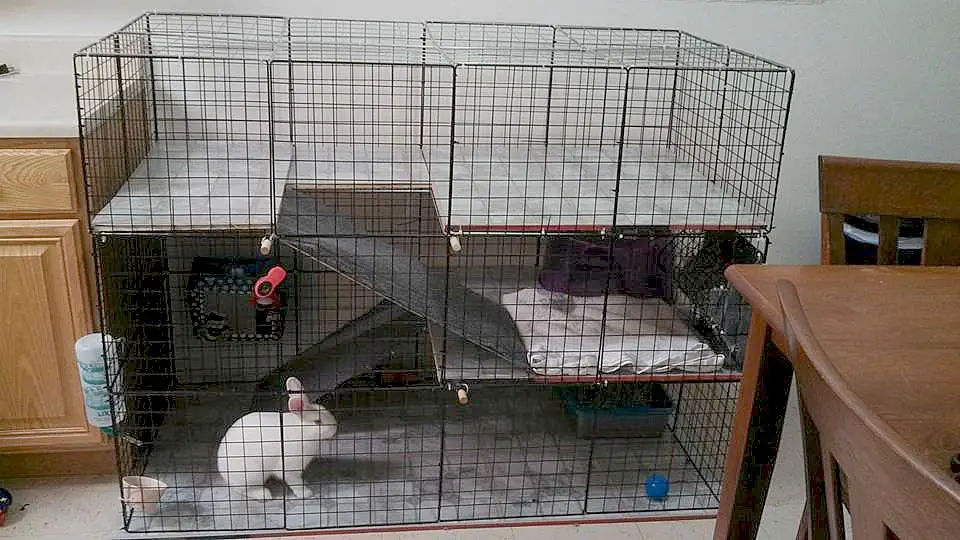

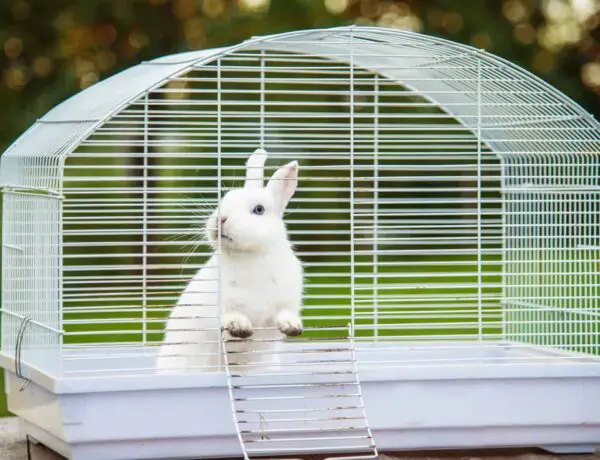
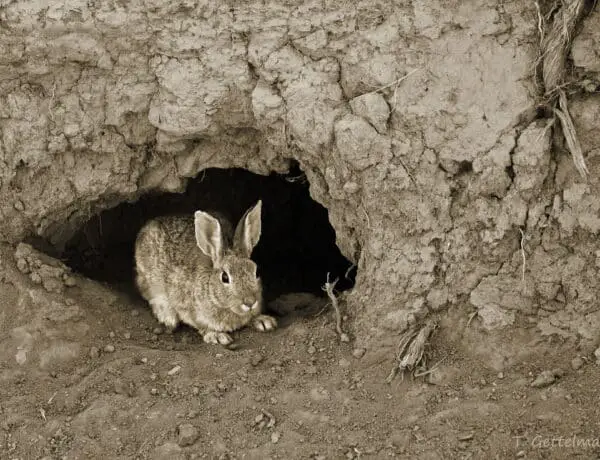
No Comments